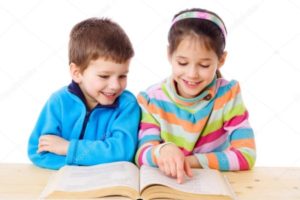
We as parents are pushing our children towards adult directed and age segregated activities, leaving no time spared for kids to enjoy playing with a sibling at home or finding a friend in the neighbourhood to play with.
To enhance play and learning and reduce the impact of Solitary play and Gadget play we need to encourage children to play and learn in a mixed age group.
Here are few of my Observations on the
“Different Aged – One Learning Group.
1. CLASSIFICATION – Younger child learns to classify and identify items and objects. Seeing the older child they learn to put things differently. What goes together and what looks different. For example when a young child is given a set of crayons and a basket of fruits to separate…and asked to pick two things which look the same …he will place the orange crayon and orange fruit together…cause the colour is same. Whereas the older child understands to separate them according to its classification of fruits and colours. Seeing the older child perform the younger automatically makes the correction.
2. NURTURE PATIENCE AND CONFIDENCE – Older children learn to nurture their patience and hold themselves responsible to be teachers to the younger ones. Leadership qualities and Confidence of performance are also enhanced.
3. EMOTIONAL SUPPORT – Younger children are better looked after and helped around with tasks they find it difficult to cope. For example if a younger child finds it hard to fold a paper correctly into half or peel the skin of the orange , the older child will most willingly help him out.
4. INSPIRES IMAGINATION AND CREATIVITY – Older children are too specific in their play and work. To think “Out Of The Box” the younger ones magical ideas does wonders on the older minds.
5. DEVELOPS NEW SKILLS – Younger children are introduced to activities more difficult and complex played and learned by older children. This gives an opportunity to the younger child to face the challenge and gives him a chance to test his own ability.
6. LEARNING ADJUSTMENTS – Older child will allow the younger one to engage and enjoy the activity. Adjustment to accommodate the younger child is not taken as a sacrifice. This goes a long way in making them gentle and caring humans.
7. ENCOURAGES VERBAL- NON VERBAL INTERACTION – We all understand that when two or more children are put together in a group there is going to be lots of talks and giggles. Playing in the garden, Splashing in a pool, Running around the backyard together….all leads to some remarkable interaction of words and talks. I am sure….you as a child would have experienced it too.
Joint participation in activities is a HEALTHY SIGN and should be encouraged amongst siblings and different aged children.
